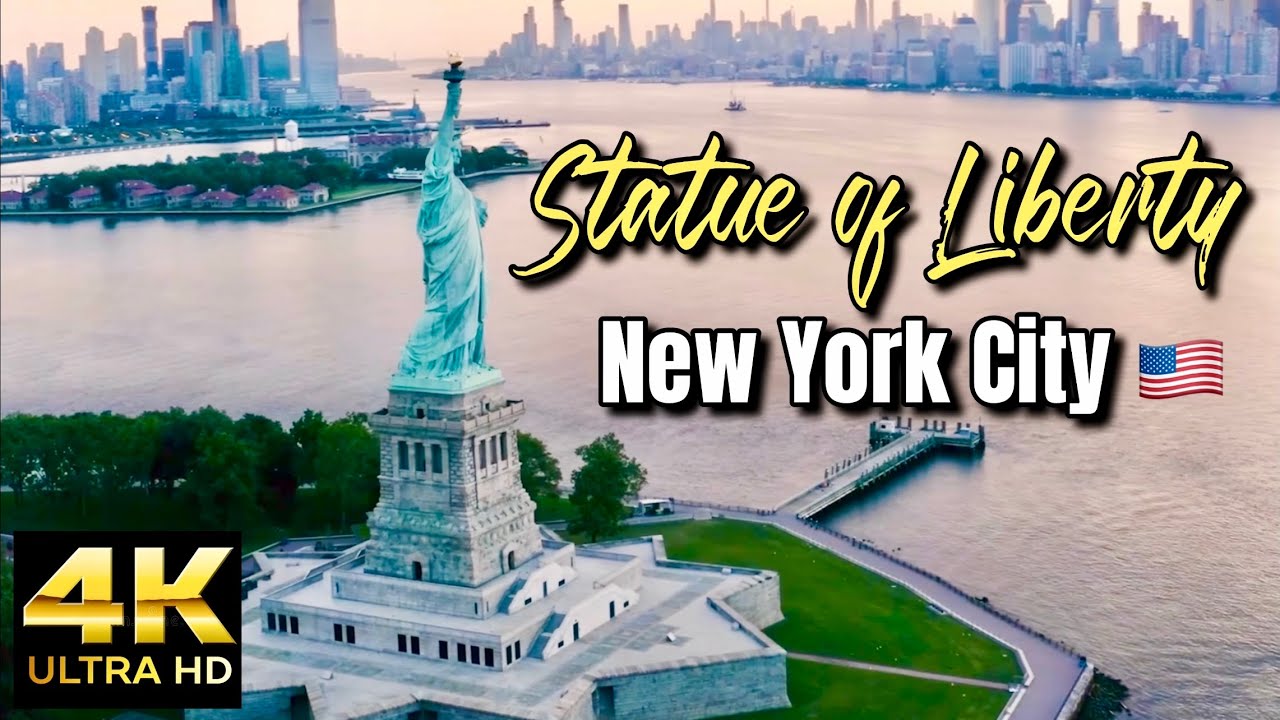The Statue of Liberty is a colossal neoclassical sculpture on Liberty Island in New York Harbor in New York City, in the United States. The copper statue, a gift from the people of France to the people of the United States, was designed by French sculptor Frédéric Auguste Bartholdi and built by Gustave Eiffel. The statue was dedicated on October 28, 1886, and is a renowned symbol of the United States and its ideals of liberty and peace.
History
The Statue of Liberty was designed by French sculptor Frédéric Auguste Bartholdi and built by Gustave Eiffel. The statue was a joint effort between the two countries to commemorate the centennial of the signing of the United States Declaration of Independence. The Statue of Liberty was given to the United States by France in 1886 as a symbol of friendship between the two countries. The statue was dedicated on October 28, 1886, and has become a powerful symbol of freedom and democracy.
Design
The Statue of Liberty is a colossal neoclassical sculpture, standing 151 feet tall from the base to the top of the torch. The copper statue is of a robed female figure representing Libertas, the Roman goddess of freedom, who bears a torch and a tabula ansata (a tablet evoking the law) upon which is inscribed the date of the American Declaration of Independence, July 4, 1776. The statue is an icon of freedom and of the United States: a welcoming signal to immigrants arriving from abroad.
Features
The Statue of Liberty has many features that make it an iconic symbol of freedom and democracy. The tablet in the statue’s left hand is inscribed with the date of the Declaration of Independence, July 4, 1776. The statue’s right foot is slightly forward, symbolizing a march into the future. The seven spikes of the crown represent the seven seas and the seven continents of the world, indicating the statue’s universal concept of liberty. The torch in the statue’s right hand is a symbol of enlightenment.
Interior
The Statue of Liberty is hollow, with a large interior space. The base of the statue contains an observation deck and a museum dedicated to the history of the statue and its symbolism. There is also a gift shop and a cafe. Visitors can take an elevator to the observation deck, which offers spectacular views of New York Harbor and the surrounding area.
Restoration
The Statue of Liberty underwent a major restoration project in 1984-1986. During the restoration, the statue was cleaned and repaired, and the torch was replaced with a new torch made of 24k gold-plated copper. The project also included the installation of an elevator and the addition of a new museum in the base of the statue.
Location
The Statue of Liberty is located on Liberty Island in New York Harbor. The island is accessible by ferry from Battery Park in Manhattan and from Liberty State Park in New Jersey. The statue is a popular tourist attraction and is visited by millions of people each year.
Conclusion
The Statue of Liberty is an iconic symbol of freedom and democracy and is one of the most recognizable landmarks in the world. The statue is a reminder of the values of freedom and liberty that the United States stands for, and is a powerful symbol of hope and opportunity for people around the world.


